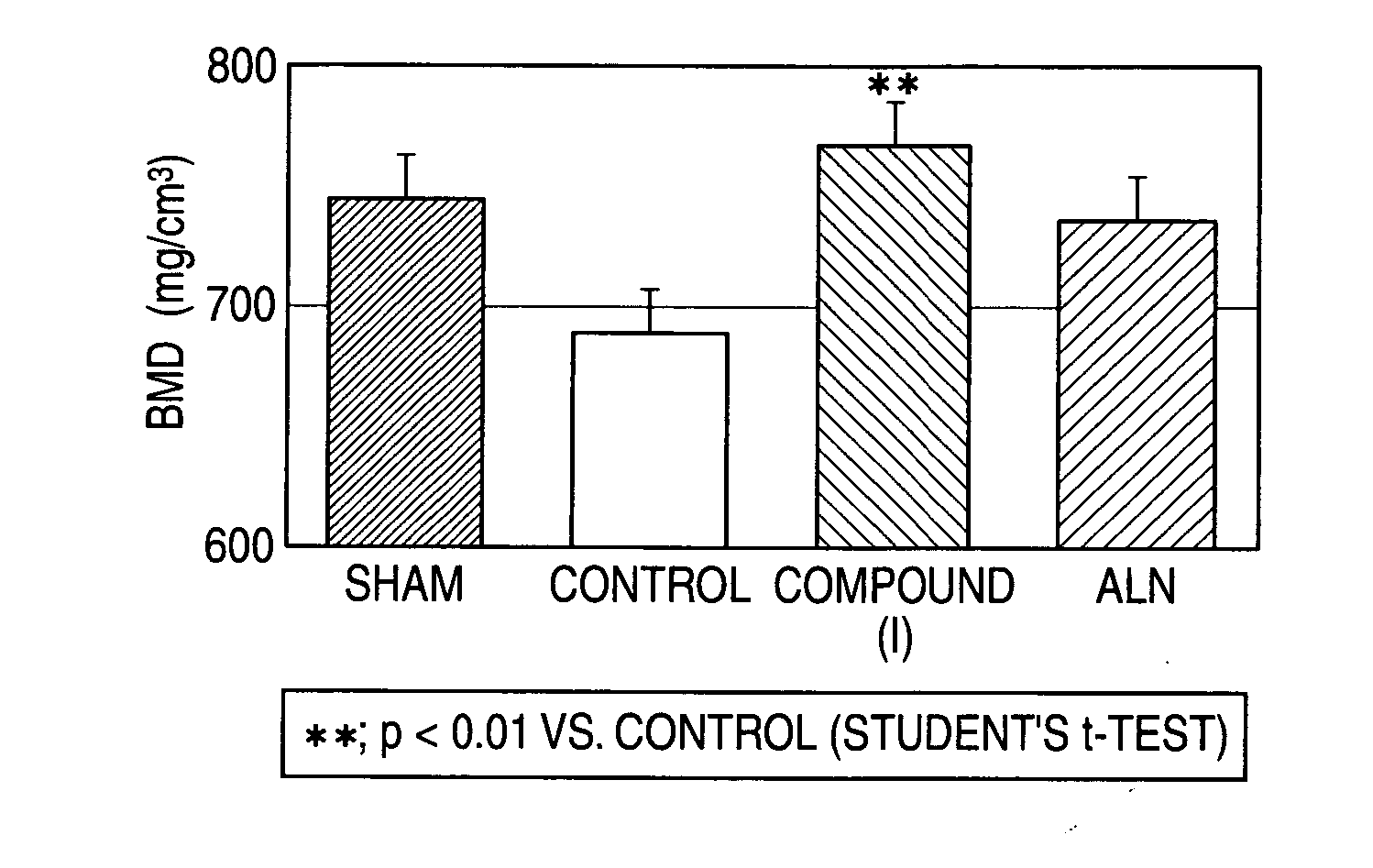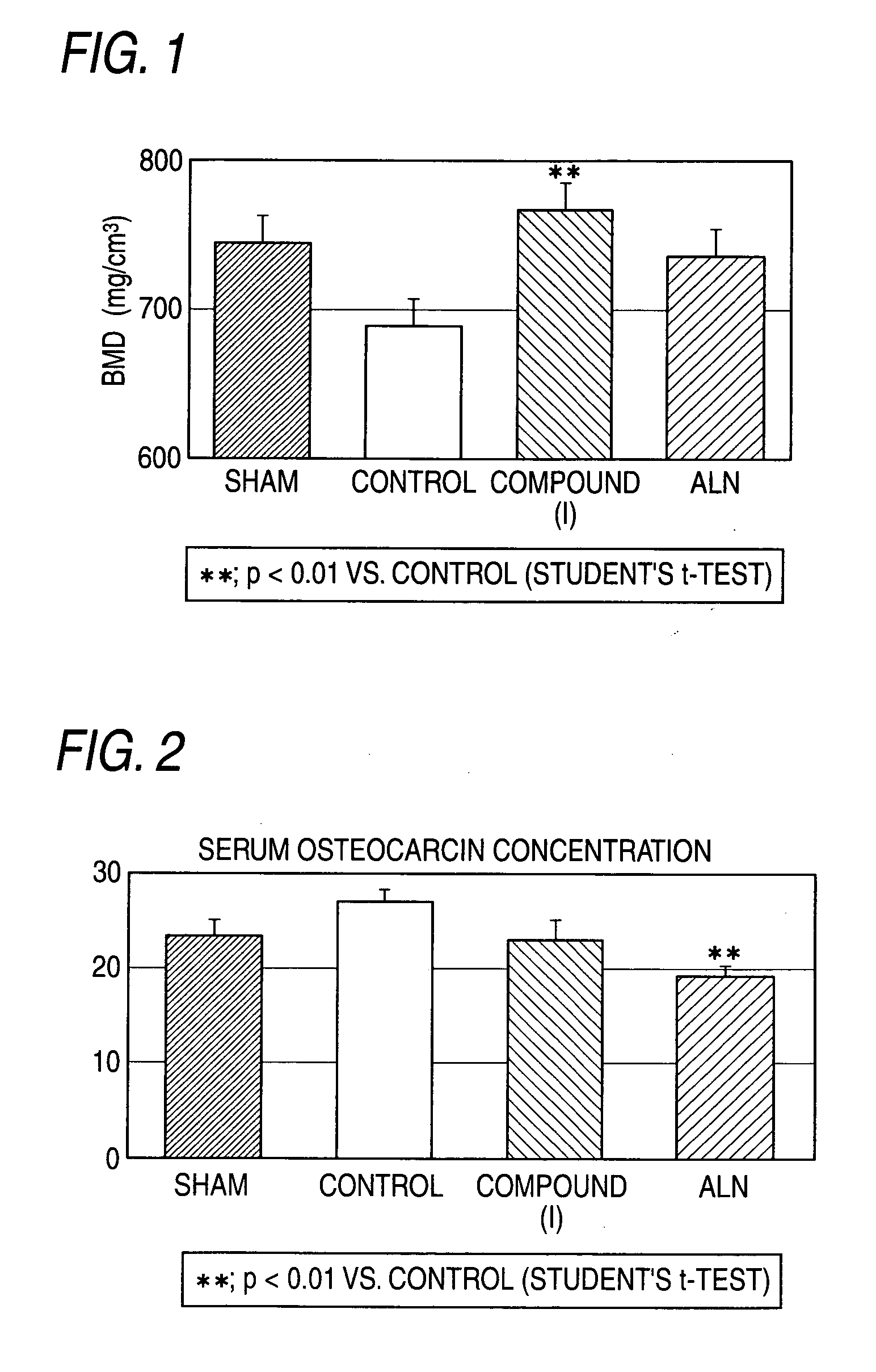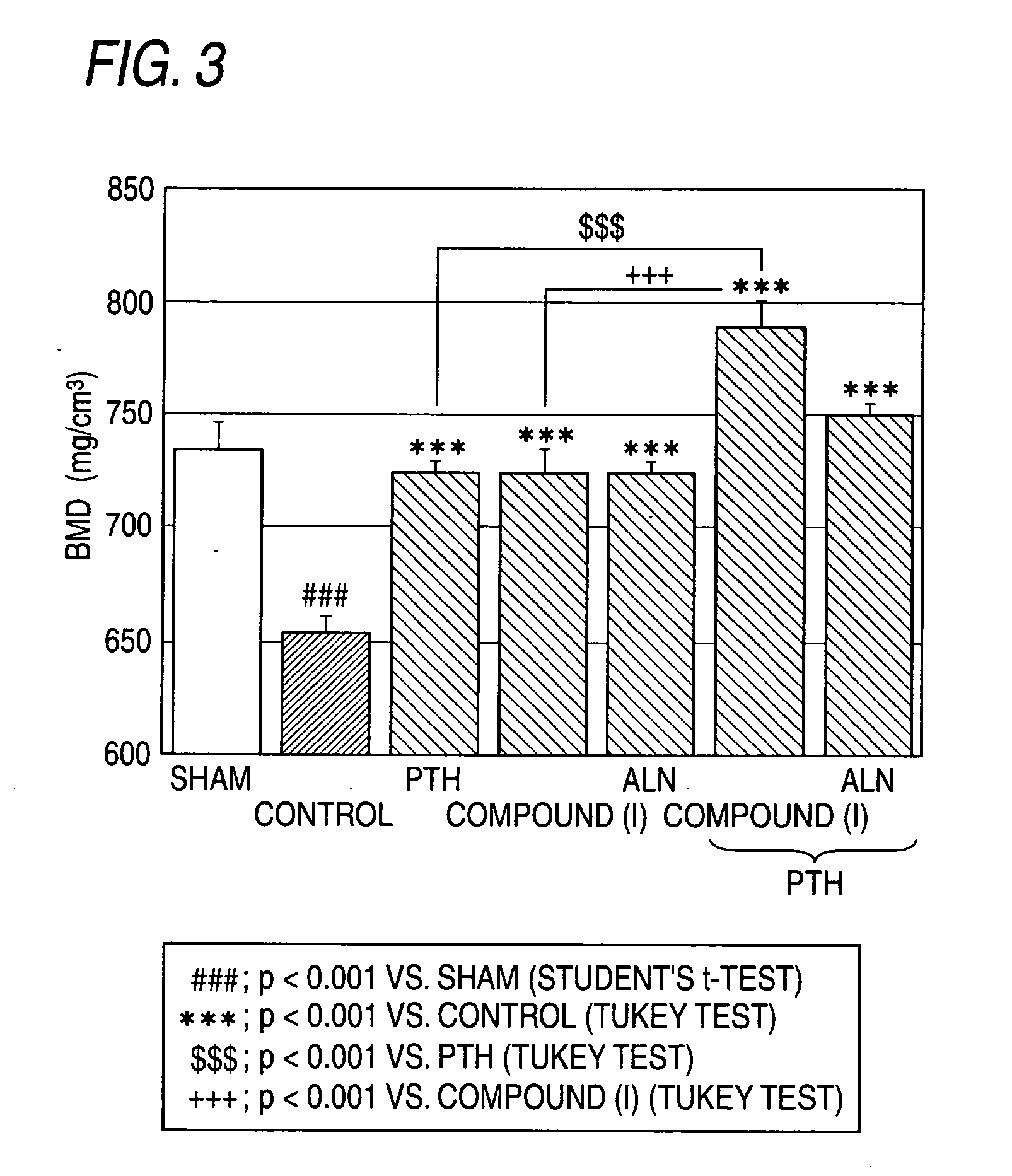Bone Densifying Agent Characterized By Use Of Cathepsin K Inhibitor With Pth
a technology of densifying agent and cathepsin k inhibitor, which is applied in the direction of drug composition, peptide/protein ingredient, metabolic disorder, etc., can solve the problems of poorly understood and unfulfilled discovery of the mechanism of bone metabolic disease, and achieve the effect of increasing the efficiency
- Summary
- Abstract
- Description
- Claims
- Application Information
AI Technical Summary
Benefits of technology
Problems solved by technology
Method used
Image
Examples
example 1
Preparation of (N-((1S)-3-{(2Z)-2-[(4S)-3,4-dimethyl-1,3-thiazolidin-2-ylidene]hydrazino}-2,3-dioxo-1-tetrahydro-2H-pyran-4-ylpropyl)cycloheptanecarboxamide) (compound (9))
[0169]
[0170] Compound (8); (N-(3-{(2Z)-2-[(4R)-3,4-dimethyl-1,3-thiazolidin-2-ylidene]hydrazino]-2,3-dioxo-1-tetrahydro-2H-pyran-4-ylpropyl)cycloheptanecarboxamide) (1.97 g) was recrystallized from isopropanol / ethyl acetate (1 / 1 by volume). From this mother liquor, the mixture of L-isomer (N-((1S)-3-{(2Z)-2-[(4S)-3,4-dimethyl-1,3-thiazolidin-2-ylidene]hydrazino}-2,3-dioxo-1-tetrahydro-2H-pyran-4-ylpropyl)cycloheptanecarboxamide) and D-isomer (N-((1R)-3-{(2Z)-2-[(4S)-3,4-dimethyl-1,3-thiazolidin-2-ylidene]hydrazino}-2,3-dioxo-1-tetrahydro-2H-pyran-4-ylpropyl)cycloheptanecarboxamide, whose D / L ratio was 32 / 68 (1.15 g, pale yellow powder) was obtained.
[0171] This washed with ethyl acetate, and it was allowed to stand toward room temperature, and the crystals were collected by filtration. The mother liquor was conce...
experiment 1 (
Administration Schedule 1)
[0194] In order to confirm the effect of the compound (I) and ALN, 56 days after OVX, an intermediate autopsy was performed. In FIG. 1, both compounds showed an increasing effect of BMD in the tibia.
[0195] In FIG. 2, a serum OC concentration, bone formation marker, was decreased by the repeated administration of ALN for 55 days. Whereas a serum OC concentration was not decreased by the repeated administration of the compound (I) for 55 days. From these results, although they are both bone resorption inhibitors, a cathepsin K inhibitor does not affect bone formation, and it is obvious that it has a more excellent effect when used in combination with a type of PTH, compared with use of BP in combination with a type of PTH.
[0196]FIG. 3 shows that PTH, compound (I) and ALN suppressed the OVX-induced BMD loss in the tibia each alone. The group in which combination with the PTH and compound (I) showed a significant effect over PTH administration alone. While th...
experiment 2 (
Administration Schedule 2)
[0199] A bone resorption inhibitor and PTH were administered in combination for a long term.
[0200]FIG. 5 shows that PTH, the compound (I) and ALN each inhibited the reduction of BMD of tibia caused by OVX. The effect on increase of BMD of tibia of compound (I) in combination with PTH was greater than that of ALN in combination with PTH.
[0201]FIG. 6 shows that, the compound (I) has an inhibitory effect on urinary CTX concentration (bone resorption marker) both in sole administration group and in combination administration. However, an inhibitory effect of ALN on urinary CTX was weaker than that of compound (I).
[0202] As to the increase of BMD, as a result of investigation into the effect of two types of bone resorption inhibitors (a cathepsin K inhibitor and a BP) each having different activity, about use in combination with a type of PTH (a bone formation stimulator), combination of cathepsin K inhibitor and a type of PTH had an excellent effect in incre...
PUM
| Property | Measurement | Unit |
|---|---|---|
| pH | aaaaa | aaaaa |
| concentration | aaaaa | aaaaa |
| concentration | aaaaa | aaaaa |
Abstract
Description
Claims
Application Information
 Login to View More
Login to View More - R&D
- Intellectual Property
- Life Sciences
- Materials
- Tech Scout
- Unparalleled Data Quality
- Higher Quality Content
- 60% Fewer Hallucinations
Browse by: Latest US Patents, China's latest patents, Technical Efficacy Thesaurus, Application Domain, Technology Topic, Popular Technical Reports.
© 2025 PatSnap. All rights reserved.Legal|Privacy policy|Modern Slavery Act Transparency Statement|Sitemap|About US| Contact US: help@patsnap.com



